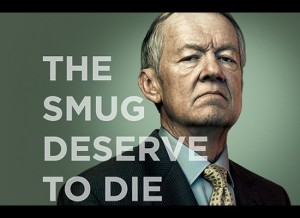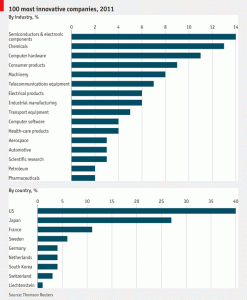My marketing team chose to study Club Penguin, an online virtual world for socializing and playing games, aimed at children aged 6-14. We chose Club Penguin because we thought that it would be interesting to study it from a marketing point of view, as it’s structure was very different from the other companies offered, as it operates completely online. We quickly learned that establishing solid SWOT factors, and clearly identifying aspects of the 4P’s of marketing was difficult due to the online nature of the company, as the internet offers endless possibles. This was the first time that I knew some of my team members coming into the assignment (rather than meeting them for the first time through being in the assigned team); it was both positive and negative, as I had a lot of fun working with them however, it is more difficult to stay on track when working with friends. From this team experience, I have learned that I personally prefer to work with acquaintances rather than with good friends for serious assignments. However, I did learn how to balance being disciplined and offering constructive criticism when necessary, while still maintaining those friendships (thank goodness eh?) For the next time around, it would have been great if we had started earlier on our final video, because there are so many cool ways to create a video with a company like Club Penguin (we had even thought of going to the Aquarium to see the real penguins there, had we only started planning earlier). All in all, I enjoyed this marketing assignment because it asked for us teams to do a variety of tasks and left the creativity largely up to us. 
THE cat of all cats
Elementary school. I glance around the classroom and notice a cartoon cat’s face on many of my classmate’s stationary, lunchboxes, backpacks etc. I do not pay much attention to it, I think to myself that it is some sort of Japanese cartoon fawned over by young girls and that’s that. Years later, I am in a small town in Croatia and see grown men walking around in shirts with this same cat’s face. There are umbrellas, beach towels, sunscreen, sandals, you name it, all marked with the cat. How can it be that years later and far from home, I am still surrounded by this expressionless cat’s face? Now however, it is not only young girls who tote the cat around on their school supplies, but teenagers, adults, seniors, females, males- everyone everywhere- who seems to be using products that could otherwise stand by themselves, but which appear more valuable because they display this cat’s face. Yes, I am talking about Hello Kitty. I am baffled and confused by Hello Kitty’s takeover of the world. The picture of the cat itself offers no real perk to the consumer, yet any random (yes, I mean very random) product that manages to incorporate Hello Kitty in some way, is suddenly a more sought after item.  Perhaps, as one blog comments (warning: foul language), this is partly because Hello Kitty DOES NOT HAVE A MOUTH and therefore is expressionless. In this way, Hello Kitty is a versatile symbol that can be applicable to any product, as instead of offering an emotion, Hello Kitty serves as a blank canvas for the consumer, resonating with whatever emotion the consumer is feeling at the time, or associates with the product. Indeed, by being a mouth-less character, Hello Kitty relates to the consumer, allowing them to project whatever emotion they wish upon the product they will be purchasing.
Perhaps, as one blog comments (warning: foul language), this is partly because Hello Kitty DOES NOT HAVE A MOUTH and therefore is expressionless. In this way, Hello Kitty is a versatile symbol that can be applicable to any product, as instead of offering an emotion, Hello Kitty serves as a blank canvas for the consumer, resonating with whatever emotion the consumer is feeling at the time, or associates with the product. Indeed, by being a mouth-less character, Hello Kitty relates to the consumer, allowing them to project whatever emotion they wish upon the product they will be purchasing.
The Illusion of Choice
It is becoming well known that the many brands you see are not necessarily from different companies and in fact, often all belong to one of a few major companies. It is very tricky for us consumers to distinguish which brands belong to what. A merchandising manager could create in-store product displays that seem to offer plenty of choice when in reality, a consumer’s decision to choose one brand over another does not really matter, as both belong to the same company. This blog post by David Griner for Adweek discusses the limited choices offered to consumers and tests our knowledge of the parent companies of some well-known brands with a ‘Brand Paternity Test’. Take the test, the results might surprise you! I suppose the main question here is whether this ‘illusion of choice’ should matter to consumers.  If a consumer still gains value from choosing one brand over another (even if they are really both from the same company) is there a problem? In my opinion, things do get shifty when companies use multiple brands to almost ‘trick’ the consumer into thinking that they have more choices than they really do. Consumers could be trying to make purchasing decisions based on which companies they support, and if they are not given full information on what brands belong to which companies, they could easily make misinformed purchasing decisions. For example, a few years ago, a consumer who did not want to support tobacco use could have easily- and unknowingly- been supporting the makers of cigarettes all along through purchases of any Kraft food product, since both Kraft foods and Marlboro both belonged to one company – the Atria group. Oh, by the way, I scored 9/15 on Adweek’s Brand Paternity Test…how did you do?
If a consumer still gains value from choosing one brand over another (even if they are really both from the same company) is there a problem? In my opinion, things do get shifty when companies use multiple brands to almost ‘trick’ the consumer into thinking that they have more choices than they really do. Consumers could be trying to make purchasing decisions based on which companies they support, and if they are not given full information on what brands belong to which companies, they could easily make misinformed purchasing decisions. For example, a few years ago, a consumer who did not want to support tobacco use could have easily- and unknowingly- been supporting the makers of cigarettes all along through purchases of any Kraft food product, since both Kraft foods and Marlboro both belonged to one company – the Atria group. Oh, by the way, I scored 9/15 on Adweek’s Brand Paternity Test…how did you do?
Blackberry’s Z10 – a move in the right direction?
A recent blog post by Karen Lee discusses the arrival of the Blackberry Z10 smartphone. Given the decline of the company Research in Motion Limited (RIM) –the developer of the Blackberry brand/smartphones- in 2012, the Z10’s recent release was much anticipated, and crucial to the company. Karen’s blog focuses on the idea of the promotion of this smartphone, and the critical decision of the company (Research in Motion) to officially change their name to Blackberry- which is much more recognizable amongst consumers. I agree with Karen when she points out that by changing their name to Blackberry, the company takes advantage of any positive connotations related to it. When I think of the name “Blackberry” I think of quality phones that cater to businesses/business people and/or other business functions. In regards to the Z10’s success, this view of “Blackberry” is both good and bad. Blackberry is likely to do well amongst business-focused consumers, as it has already built a strong brand reputation that caters to them. However, with this newest addition to Blackberry’s devices, the Z10 ads appear to be catering to a broader, more youthful and active audience. For example, this Z10 ad

starts with the original view of what a Blackberry device would be useful for (in an office) but promptly segues into many different activities and scenarios where diverse groups of individuals are using the smartphone for many other activities far from its traditional business/office functions. For this reason, while the Z10 can be seen as a line extension- another smartphone added to their previous models- I also see it as a brand extension, because this particular phone has many new and different features, but most importantly, is going after a completely new target market. To this target market (those less engaged in business activities), the Z10 would appear as a completely new product offered under the Blackberry brand (brand extension).
Sentimental Super Bowl- Dodge Ram Trucks Commercial
The week after the Super Bowl and as exciting as the game was, I must admit that it was the Super Bowl commercials that I went back on Youtube to watch. Maybe it’s just me, but there is something really exciting about watching these ads, knowing that they are likely the crème de la crème of their marketing team’s efforts. The one commercial that especially stood out to me was for Dodge Ram Trucks.

At first, a simple slide show of rustic photos with background narration seems out of place amongst the flashy ads of the Super Bowl. However, (and it kills me to admit it) I soon found myself tearing up at this suddenly endearing commercial that worked so well because it was so simple. With narration from Paul Harvey on the virtues of the farmer and the values that this role reflects, I saw Dodge trying to influence the consumer decision process. By linking their truck to the lifestyle of a farmer, Dodge appealed to both the functional and psychological needs of the consumer. They spoke of the many duties a farmer must accomplish, signalling that their truck is the best for the job, and that if it can handle the many demands of a rural lifestyle, the truck can definitely handle anything else. The ad also appealed to the psychological needs of the consumer. The combination of the pictures and narration spoke of the importance of self-sufficiency, hard work, humbleness, family, tradition, and in general, felt like an ode to the ‘good ol days’ of hands-on, working class America; hinting to the true grit of what helped to shape America, and what keeps it going today. A consumer would feel the psychological need to embody these qualities and to be a patriotic member of this America. Perhaps being the proud owner of a Dodge Ram truck is the key!
It was interesting and effective to see Dodge pair traditional/stereotypical images of who a farmer is with images of other individuals who also fit the description of a farmer (such as women, children, girls etc.) because this made the commercial seem more modern and relevant to our times. However, the very nature of the narration (which speaks of God etc.) still catered towards a more traditional America. I think that this was a smart move, as Ram’s most loyal customers are likely to relate to the traditional tone of the narration. I also think that this was a relevant ad to run during the Super Bowl because it talked specifically of the bond between a father and son, and watching the Super Bowl (although not exclusively) historically seems like a father/son activity.
Either way, if Ram could have a girl who’s lived in a city outside of America her entire life tearing up and feeling all sentimental (for no good reason!), I’d say it was effective.
I have also included another interesting article here that critiques Ram’s ad, bringing up important points -many to which I agree. Definitely worth a read.
Marketing and Ethics
A sudden barrage of outdoor posters declaring that certain groups of people “deserve to die” appeared in many US cities this past summer. These posters included no other explanatory text and were often met with anger, confusion, or both. 
However, the posters could be linked to the Lung Cancer Alliance’s online campaign “No one deserves to die” where it explains that “many people believe that if you have lung cancer you did something to deserve it. It sounds absurd, but it’s true. Lung cancer doesn’t discriminate and neither should you.” Highlighting that it is just as obscene to declare that, for example, “cat lovers deserve to die” as it is to think that people with lung cancer somehow brought it upon themselves. At first glance, many people would probably find the ads offensive, but when linked to the campaign to raise awareness about lung cancer, the ads do seem effective and prove the point. My question about ethics is not so much regarding the possibility of the ads being offensive, but more about the idea that in many articles discussing this campaign, the ads are seen to be more reasonable because they are linked to a positive organization that is trying to raise awareness for a good cause. Regardless of if you think this specific ad is appropriate or not, I think that it is important to pay attention to the context of the campaign. If the ads were being used to sell a consumer good for example, they probably would not have been tolerated. So when then, is it OK to use controversial advertising methods, and are you/ should you be given more slack if the ads turn out to be in support of a good cause?
HTC, the ‘Anti-Apple’
The company HTC, which manufactures smart phones, has been quietly gaining more market share and presence within the US as well as internationally. This article discusses the current success of this company as it has “claimed the top position in the third quarter for the first time” within the US. This success comes in part, from HTC’s “anti-Apple” strategy, mentioned in this article “where Apple is secretive, HTC is open. Where Apple is exclusive, HTC works with all carriers. Where Apple is proprietary, HTC is collaborative. Where Apple customizes for no one, HTC customizes for everyone.” This is an interesting manoeuvre, as being the direct opposite of Apple, which is an extremely successful company, would seem to be detrimental to your business, as you are doing the exact opposite of what seems to be working for Apple. However, this also allows your company to fill a gap in the market that Apple surely does not fill, and so far, HTC has benefitted from this risky strategy.

No matter how hard we try to avoid them, presentation skills are essential
As this week’s class presentations come to a close, I thought that it would be suitable to include an article on the merits of public speaking and presentation skills. In the business world, the ability to present well can be categorized as a ‘soft skill’, yet how you present yourself, an idea, and your company serves as the tipping point to success. It is important to have ‘hard skills’ such as the ability to calculate a break- even point (which I am now able to do thanks to COMM 101), but if you are unable to explain how you have come to the numbers and why they are important, there really is little benefit in calculating the break-even in the first place. Having good presentation skills does not simply mean that you are a capable public speaker. Being able to write a business letter, for example, or even an email to your boss is also part of the package. As we continue to learn the basics of business, it is easy to focus on the ‘hard skills’, however, we should remind ourselves to also maintain our ‘soft skills’-especially our presentation skills- and to embrace each opportunity to improve them.
A Response to Kate Wallace’s Blog Post “Occupy Wall Street Heading North”
Kate discusses the growth of the Occupy Wall Street movement and mentions that it will be interesting to see how the Canadian authorities respond to the movement as it heads to Canada. It has been more than a month since her blog posting, and recently, the Vancouver city police have started to move into the Vancouver Occupy site in an attempt to keep it up to safety standards.
 The Occupy Wall Street movement is interesting, because as Kate discusses, it highlights a general sense of social inequality and “that the government has yet to prosecute any Wall Street executives who acted illegally and immorally leading to the economic crisis”. However, the events of this most recent economic crisis cannot solely be blamed on Wall Street CEOs. Everyone played a role in causing the crisis, down to the regular individual who applied for a mortgage when they knew they could not pay it back. I am not supporting or condemning the Occupy Wall Street movement, but as protesters demand that the government and business CEO’s be more accountable for their actions, it would probably be a good idea that we average individuals also follow this request.
The Occupy Wall Street movement is interesting, because as Kate discusses, it highlights a general sense of social inequality and “that the government has yet to prosecute any Wall Street executives who acted illegally and immorally leading to the economic crisis”. However, the events of this most recent economic crisis cannot solely be blamed on Wall Street CEOs. Everyone played a role in causing the crisis, down to the regular individual who applied for a mortgage when they knew they could not pay it back. I am not supporting or condemning the Occupy Wall Street movement, but as protesters demand that the government and business CEO’s be more accountable for their actions, it would probably be a good idea that we average individuals also follow this request.
View Kate’s full post here: https://blogs.ubc.ca/katewallace/2011/10/09/occupy-wall-street-heading-north/
“The Daily Chart”
This blog provides new charts, graphs, and other audiovisual devices coupled with explanations and discussions relevant to current political, economic, and social issues; this blog can be followed through The Economist website. A recent posting “Where innovation lies”, is a chart and discussion of the the world’s most innovative companies and where they are located in the world. 
Another post “Hard Times” displays the change in consumer spending in America during the recent recession, shedding some light onto what is most valued by consumers, and consumer spending trends during times of recession. “This time they really mean it” is another post that provides a chart displaying which nations keep the promises they make at G20 summits, building upon the idea of corporate responsibility, and applying this idea to nations. In this blog, concepts such as entrepreneurship,supply chain management, sustainability, finance, and market research are applied to real world situations. Visual representations provide clear and succinct explanations to important and relevant current events and ‘Daily Chart’ is indeed a blog that is worth your time!
Check it out here:http://www.economist.com/blogs/dailychart

